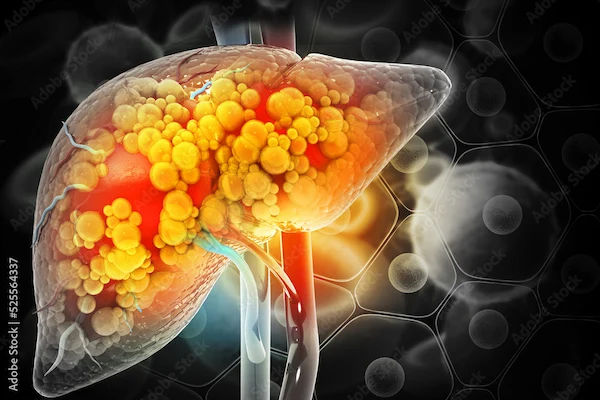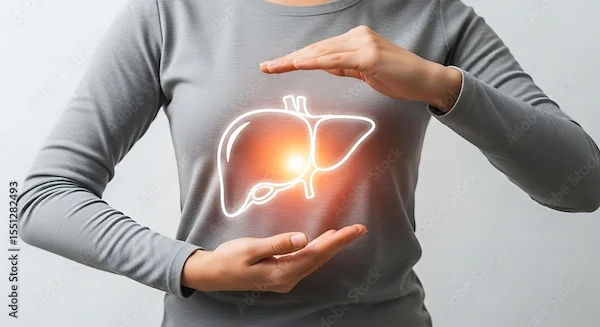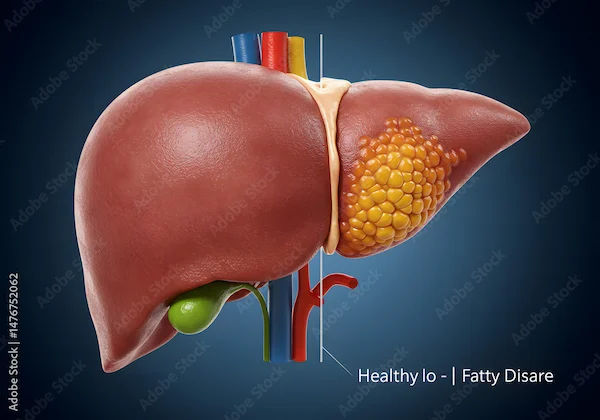Understanding Fatty Liver Disease
Know about the understanding of fatty liver disease, what it is, causes, symptoms, how it affects your health and treatment options. Learn how to manage fatty liver disease.


Introduction
Fatty liver disease is a common condition that affects millions of people worldwide. While it often doesn’t cause noticeable symptoms in the early stages, if left untreated, it can lead to serious liver damage. The good news is that with the right lifestyle changes and medical care, fatty liver disease can often be managed or even reversed.
In this article, we’ll break down everything you need to know about fatty liver disease, what it is, its symptoms, causes, and how you can take steps to improve your liver health.
What Is Fatty Liver Disease?
Fatty liver disease, also known as hepatic steatosis, occurs when excess fat builds up in the liver. Normally, the liver contains some fat, but when fat makes up more than 5-10% of the liver’s weight, it can lead to inflammation and damage over time.
There are two main types of fatty liver disease:
1. Non-Alcoholic Fatty Liver Disease (NAFLD) – This type occurs in people who drink little to no alcohol. It’s often linked to obesity, diabetes, or high cholesterol.
2. Alcoholic Fatty Liver Disease (AFLD) – This is caused by excessive alcohol consumption, which damages liver cells and leads to fat accumulation.
Consult General Practitioner for Personalised Advice
Symptoms of Fatty Liver Disease
In the early stages, fatty liver disease usually doesn’t cause noticeable symptoms. However, as the condition progresses, some people may experience:
Fatigue or weakness
Mild pain or discomfort in the upper right side of the abdomen
Unexplained weight loss
Loss of appetite
Yellowing of the skin or eyes (jaundice, in severe cases)
Since symptoms are often silent, many people don’t realise they have fatty liver disease until it’s detected during routine blood tests or imaging scans.
What Causes Fatty Liver Disease?
Several factors contribute to the development of fatty liver disease:
For NAFLD:
Obesity – Excess body fat increases fat storage in the liver.
Insulin resistance or Type 2 diabetes – High blood sugar levels promote fat buildup.
High cholesterol or triglycerides – These fats can accumulate in the liver.
Poor diet – Eating too much processed food, sugar, and unhealthy fats.
Sedentary lifestyle – Lack of exercise contributes to weight gain and metabolic issues.
For AFLD:
Heavy alcohol use – Alcohol directly damages liver cells, leading to fat accumulation.
How Does Fatty Liver Disease Affect Your Health?
If left untreated, fatty liver disease can progress to more serious conditions, such as:
Liver inflammation (steatohepatitis) – This can lead to scarring (fibrosis).
Cirrhosis – Severe scarring can cause permanent liver damage and liver failure.
Liver cancer – In rare cases, long-term damage increases cancer risk.
Tips to Manage and Improve Fatty Liver Disease
1. Eat a Liver-Friendly Diet
Increase fibre – Whole grains, fruits, and vegetables help reduce fat buildup.
Choose healthy fats – Avocados, nuts, seeds, and olive oil are better than fried or processed fats.
Reduce sugar and refined carbs – Avoid sugary drinks, white bread, and sweets.
Limit processed foods – Cut back on packaged snacks, fast food, and high-sodium meals.
2. Exercise Regularly
Aim for at least 30 minutes of moderate exercise (walking, cycling, swimming) most days of the week.
Strength training helps improve metabolism and reduce liver fat.
3. Maintain a Healthy Weight
Losing just 5-10% of body weight can significantly reduce liver fat.
Avoid crash diets—slow, steady weight loss is more sustainable.
4. Avoid Alcohol
If you have AFLD, quitting alcohol is essential.
Even with NAFLD, limiting alcohol helps protect the liver.
5. Control Underlying Conditions
Manage diabetes, cholesterol, and blood pressure with your doctor’s guidance.
Regular check-ups help monitor liver health.
When to See a Doctor
If you’re at risk (overweight, diabetic, or a heavy drinker), consider getting tested. A simple blood test (liver function test) or ultrasound can detect fatty liver disease.
Final Thoughts
Fatty liver disease is a growing health concern, but with awareness and lifestyle changes, it can be managed effectively. Eating well, staying active, and avoiding alcohol are key steps to keeping your liver healthy. If you suspect you might have fatty liver disease, don’t wait; consult a doctor and get the right tests done.
Consult General Practitioner for Personalised Advice
Consult General Practitioner for Personalised Advice

Dr Syed Mateen Pasha
General Physician
2 Years • MBBS
Bengaluru
PRESTIGE SHANTHINIKETAN - SOCIETY CLINIC, Bengaluru

Dr Bhargav Vuppumalla
General Physician/ Internal Medicine Specialist
5 Years • MBBS MD GENERAL MEDICINE
Bengaluru
Apollo Medical Center, Marathahalli, Bengaluru

Dr. Avinash Pasuparthy
General Practitioner
5 Years • MBBS
Visakhapatnam
Apollo Clinic Vizag, Visakhapatnam

Dr. Pankaj Tripathi
General Practitioner
20 Years • MBBS, MD Pathology
Lucknow
Best Diabetologist Clinic, Lucknow

Dr. Ritesh Motghare
General Practitioner
18 Years • MBBS PGCDM
Nagpur
HEALTH CENTRE VNIT NAGPUR, Nagpur




